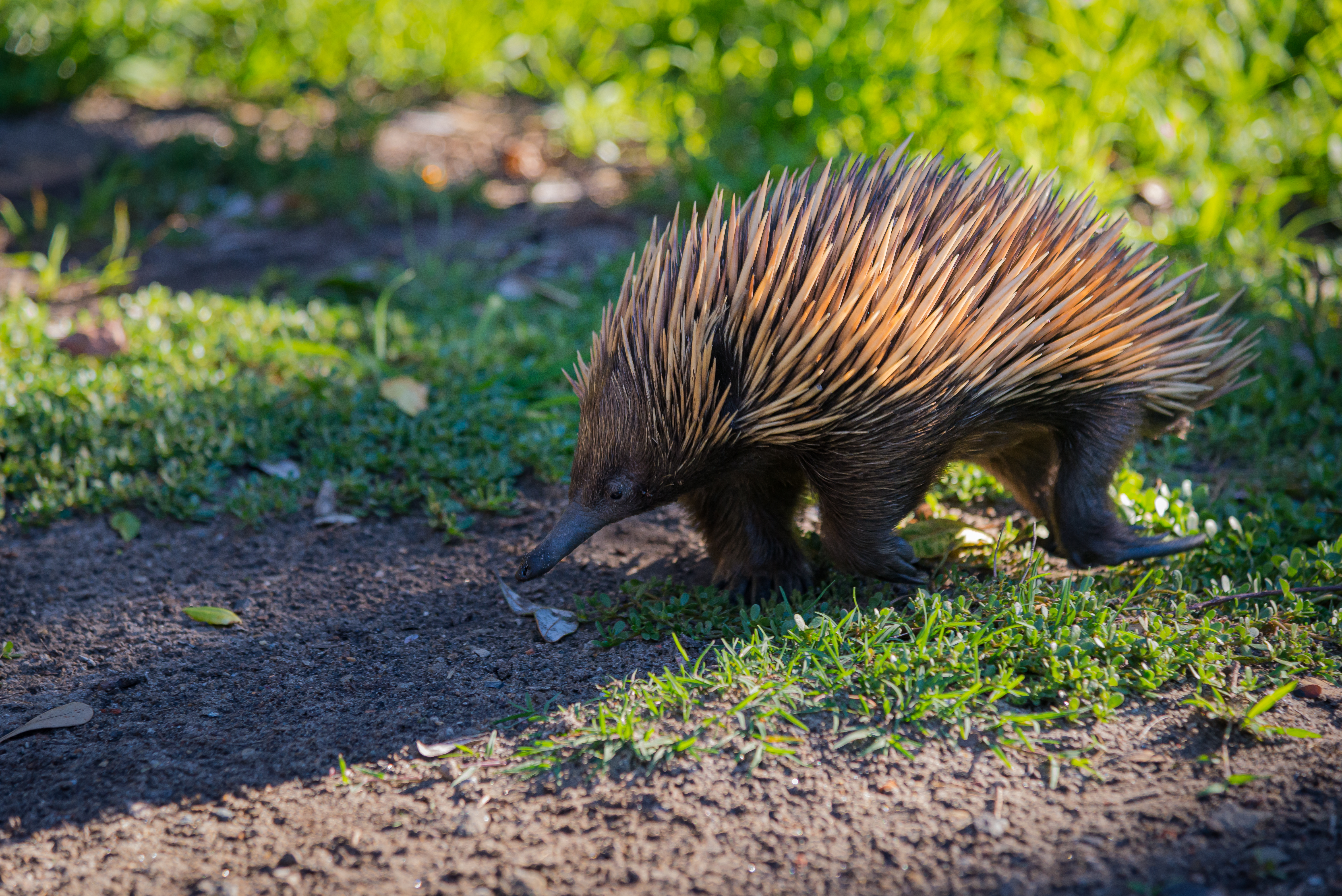
Pre-reading questions:
- Before learning about echidnas, what do you think are the typical characteristics of mammals?
- If you were to guess, why might some animals be challenging to locate in the wild? Can you think of any specific features or behaviors that could make them elusive?
Vocabulary:
- remarkable /ri-MAHR-kuh-buhl/
- earthquake /URTH-kweyk/
- encounter /en-KOUN-ter/
- conflict /KON-flikt/
- conservation /kon-ser-VEY-shuhn/
[adjective] – unusual or special, and therefore surprising and worth mentioning
The artist’s painting was remarkable, capturing the beauty of the sunset in vivid colors.
[noun] – a sudden violent movement of the earth’s surface, sometimes causing great damage
The earthquake rattled the windows, making everyone rush out of their houses in panic.
[noun] – a meeting, especially one that happens by chance
My encounter with the famous author at the bookstore was both surprising and delightful.
[noun] – an active disagreement between people with opposing opinions or principles
The political conflict led to heated debates and tension among the citizens.
[noun] – the protection of plants and animals, natural areas, and interesting and important structures and buildings, especially from the damaging effects of human activity
The national park focuses on the conservation of endangered species and their habitats.
Article reading:
The discovery carries cultural significance in the region, as the echidna is deeply woven into local traditions. The Yongsu Sapari elders shared a tradition where conflicts are resolved by sending one party into the forest to find the echidna and another to the ocean to locate a marlin. According to locals, the simultaneous discovery of both creatures symbolizes the end of conflict and a return to harmonious relationships. This rare find not only emphasizes the importance of conservation efforts but also sheds light on the unique biodiversity present in the Cyclops Mountains of Indonesia.
Comprehension questions
- What did scientists from Oxford University discover in the Cyclops Mountains?
- How does the article describe Attenborough’s long-beaked echidna physically?
- Why was biologist James Kempton relieved and joyful on the last day of the expedition?
- What challenges did the team face during their four-week expedition?
- According to local traditions, how are conflicts resolved involving the echidna, and what does the simultaneous discovery of the echidna and marlin symbolize?
Discussion questions
- Have you, or someone you know, ever experienced the joy and relief of discovering something remarkable? If yes, what was it, and how did it impact you? If not, can you imagine a situation where such a discovery might bring joy and relief?
- Do you have any traditions in your community that involve nature or wildlife? If yes, can you share one of those traditions and its significance? If not, would you be interested in establishing a tradition that connects with nature? Why or why not?
- Do you think the discovery of Attenborough’s long-beaked echidna is important for conservation efforts?
- How might the cultural significance of the echidna in the Cyclops Mountains influence conservation efforts in that region? Consider the connection between cultural traditions and environmental awareness.
- In what ways can the challenges faced by the expedition team, such as an earthquake and malaria, contribute to our understanding of the significance of discovering new species? Reflect on the perseverance and dedication required for scientific exploration in challenging environments.